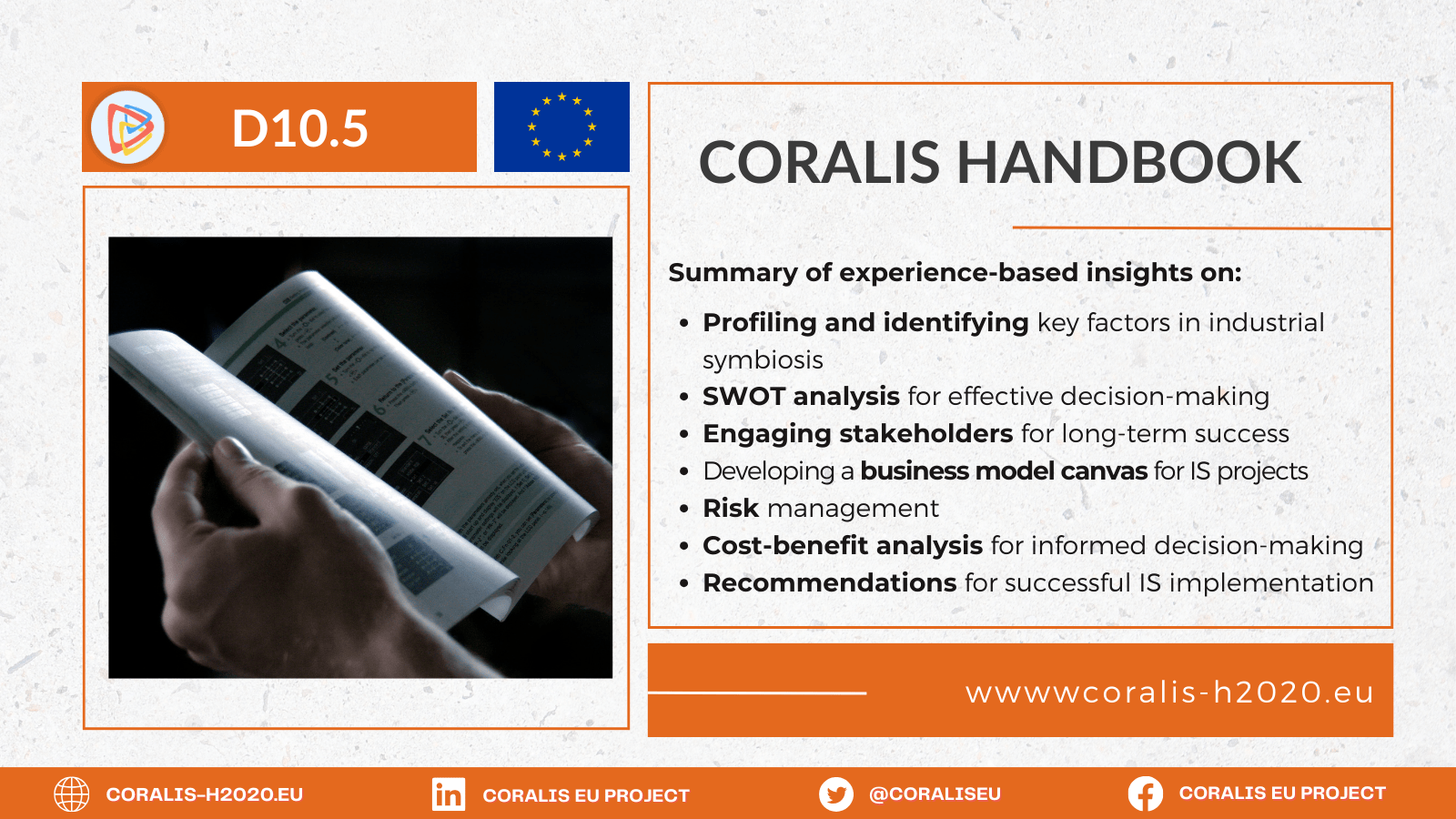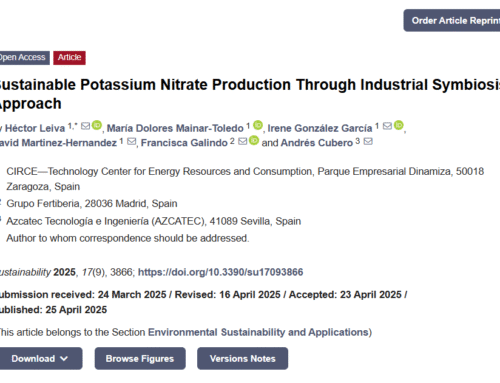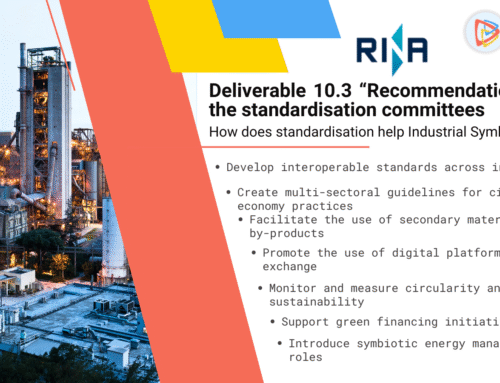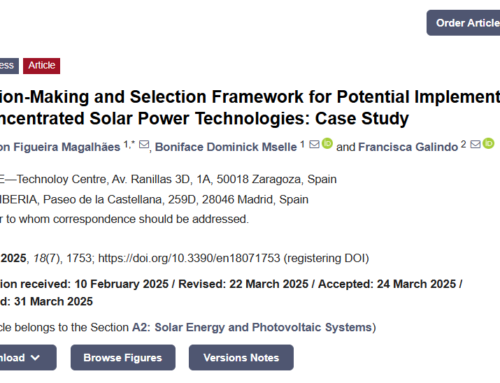The CORALIS project has played a pivotal role in advancing industrial symbiosis (IS) initiatives, offering invaluable guidance and practical tools for stakeholders involved in resource efficiency, waste reduction, and collaborative partnerships. The Deliverable 10.5 “CORALIS Handbook”, developed by Centro de Investigación de Recursos y Consumos Energéticos (CIRCE), serves as a comprehensive guide for implementing successful IS projects. This article summarises key insights from the handbook, providing an overview of the methodology, key learnings, and recommendations for fostering sustainable industrial partnerships.
Profiling and Identifying Key Factors in Industrial Symbiosis
Chapter 3.1 – IS Journey Tools: Profiling and Comparability Check (Pages 47–48): The profiling tool is introduced as an early-stage method to gather information on the key components of an IS initiative—such as stakeholders, symbiotic exchanges, technologies, business models, and geographic factors. The handbook provides templates and structured guidance to help facilitators profile both new and existing IS initiatives.
Additionally, the Comparability Check tool enables benchmarking by comparing IS initiatives against previously developed cases, thereby identifying similar challenges and possible strategies. This is reinforced with a comparative table format for facilitators to analyse cases based on inputs from the profiling process.
SWOT Analysis for Effective Decision-Making
Chapter 3.2 – SWOT Analysis (Page 50): The handbook presents the SWOT analysis as a flexible, iterative tool that can be used at multiple stages of the IS journey. It explains how strengths, weaknesses, opportunities, and threats can be mapped based on stakeholder input, and provides practical examples of SWOT matrices. The tool is meant to assist in both assessing current status and guiding future decisions by tracking how internal and external factors evolve over time.
Engaging Stakeholders for Long-Term Success
Chapter 3.3 – Stakeholder Engagement (Page 51): Stakeholder engagement is positioned as an essential and ongoing process. The handbook details methodologies for identifying stakeholders, assessing their influence and interest, and engaging them through appropriate communication channels. A step-by-step engagement roadmap is provided, along with tools like influence–interest matrices and feedback collection templates. The emphasis is on continuous dialogue and collaboration to ensure stakeholder buy-in and active participation throughout the IS project lifecycle.
Developing a Business Model Canvas for IS Projects
Chapter 3.4 – Business Model Canvas (Page 67): The Business Model Canvas (BMC) is adapted specifically for IS projects, with additional considerations for symbiotic relationships. The handbook guides users through workshops to co-develop the BMC with project partners, aligning each component—such as key partnerships, value propositions, cost structures, and revenue streams—with the goals of industrial symbiosis. A completed sample canvas is included to illustrate how the tool can be practically applied in the field.
Risk Management: A Proactive Approach
Chapter 3.5 – SFMEA (Page 69): The handbook introduces the Symbiosis Failure Mode and Effect Analysis (SFMEA) as a structured risk assessment methodology. The process involves identifying potential failure modes across technical, legal, and economic dimensions, evaluating their severity, occurrence, and detectability, and calculating a Risk Priority Number (RPN). A scoring guide and worksheet templates are provided to support implementation. It also highlights the need for a risk management team that includes external technical advisors.
Cost-Benefit Analysis for Informed Decision-Making
Chapter 3.6 – Cost-Benefit Analysis (Page 65): The CBA tool in the handbook provides a framework to evaluate IS initiatives from three angles: economic, environmental, and social. It includes data collection guidelines, assumptions documentation, and a spreadsheet-based template for assessing project profitability and environmental impact. Sensitivity analysis is included to account for uncertain conditions, such as fluctuations in energy prices or regulatory changes, offering a more robust foundation for investment and policy decisions.
Through surveys, workshops, and stakeholder discussions, the CORALIS project has gathered crucial managerial, technical, and financial learnings that can guide future IS initiatives. Here is a short overview:
- Managerial learnings: Successful IS projects rely on effective facilitators, clear communication, and shared goals. Business agreements must be flexible and include contingency plans for unforeseen issues.
- Technical learnings: The development of circular facilities, integration of systems, and digital platforms are critical to the success of IS projects. However, personal relationships and effective coordination among partners remain paramount.
- Financial learnings: Funding challenges are common, and securing investments requires clear proof of concept and a solid business case. Long-term infrastructure investments may be necessary, but the environmental and financial benefits of IS projects often justify these costs.
Based on the key learnings from CORALIS, several recommendations have been made for future IS projects:
- Study successful cases: Learning from other IS projects, both national and international, can provide a reference framework and best practices for new initiatives.
- Create support offices: Setting up offices that combine innovation, technical, and legal expertise can help accelerate the development of IS projects, providing much-needed guidance and support.
- Train local authorities: Local municipalities need additional training and technical support to evaluate and manage IS projects effectively. This will ensure smoother integration of IS initiatives at the local level.
The CORALIS Handbook serves as a vital resource for anyone involved in industrial symbiosis, offering actionable insights and practical tools for successful project implementation. By focusing on clear communication, risk management, stakeholder engagement, and tailored business models, IS projects can thrive, delivering economic, environmental, and social benefits. The learnings and recommendations outlined in the handbook will help guide future IS initiatives, ensuring they are both sustainable and impactful.






